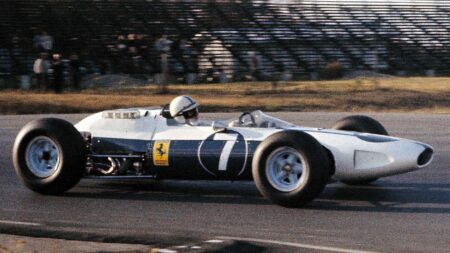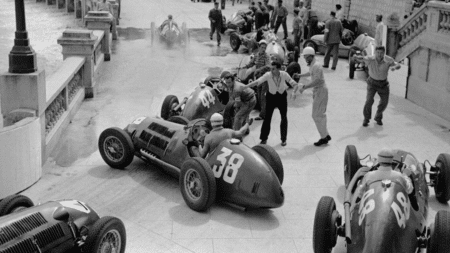Colchester Racing Developments manufactures and supplies tooling components. The business also fabricates customised metalwork – turning, milling and grinding components – to customer’s drawings and specifications. Best of all, CRD holds every drawing, mould and jig from its days as the designer and producer of Merlyn racing cars. This enables the company to supply the majority of Merlyn components to original specifications.

For Richard Mitchell, a driver dominating the 2015 HSCC Historic Formula Ford Championship, the ability to source original parts for his Merlyn Mk20 must prove useful. Mitchell is not alone, for of the 79 drivers who have participated in a round of this year’s championship, 30 of them have done so at the wheel of a chassis made in Colchester.

The level of Merlyn representation at historic Formula Ford events stems from the brand’s success in the category throughout the ‘60s and ‘70s. Though Formula Ford specialists, Merlyn produced a rich variety of competition cars during its 19-year existence.
Established in 1960 by design engineer Selwyn Hayward and farmer-cum-racing driver John Barrington Lewis, the men went about building racing cars in a former tractor shed. Their earliest creation, a front-engined Formula Junior prototype, formed the basis of Merlyn’s first production model – the ’61 Merlyn Mk2.

By this point, Cooper had won two Formula 1 titles with rear-engined machines, a feature mimicked by the Colchester crew in their third Formula Junior challenger, the Mk3. From this point onwards the brand diversified, producing a sports car in ‘62 and various Formula Ford, F2, and F3 machines thereafter. Merlyn even manufactured a dirt track midget for the American market in the early ‘70s.
The car featured this week, a Merlyn Mk4A, arrived on the scene in ’63. The ‘A’ evolution of the Mk4 featured a stiffer chassis and refined handling. The 4A also benefitted from fibreglass bodywork, replacing the metal panels worn by its predecessor. Positioned under its shapely front arches, double wishbones are bolted to the car’s tubular space frame chassis. At the rear, lower wishbones and trailing rods form the suspension set-up. The Mk4A also features front and rear anti-roll bars, disc brakes at each corner and lightweight aluminium wheels. At 480kg, it treads very lightly on the ground.

Though light enough to be zipped along by a stiff breeze, Merlyn did offer the Mk4A with three non-wind-powered options. Customers could plump for 1100cc Ford or Coventry-Climax units, though the third choice, a 1600cc Lotus-Ford twin cam, was preferable. It is the latter unit which now forms the heart of the gleaming dark green and gold car pictured. Its in-line four-cylinder engine has undergone a recent ‘refresh’ and is rated in excess of 180bhp. Power is fed to the rear wheels through a Hewland gearbox which, in true racing car fashion, pokes out of a large aperture in the rear bodywork.
#104 is supplied with new rubber but the combination of 375bhp per tonne and relatively narrow rear wheels suggests a smooth approach to traction zones is required. Should you wish to provoke the car, it is likely to generate some enjoyable angles, front wheels locked on trajectory as the tail edges wider and wider in response to throttle position.
After a time spent in Italy being driven by historic racer Massimo Vezzosi, #104 is back on home soil. The low-slung sports car has made multiple appearances at the Goodwood Revival and is now offered from Cheshire Classic Cars at a shade under £90,000. Supplied with a letter of authenticity from Merlyn and current HTP papers, the Mk4A remains eligible for historic events across the world.
#104 is listed as ‘ready to race’ and given the marque’s popularity and performance in other historic categories, I am sure it will make someone a very happy owner.










